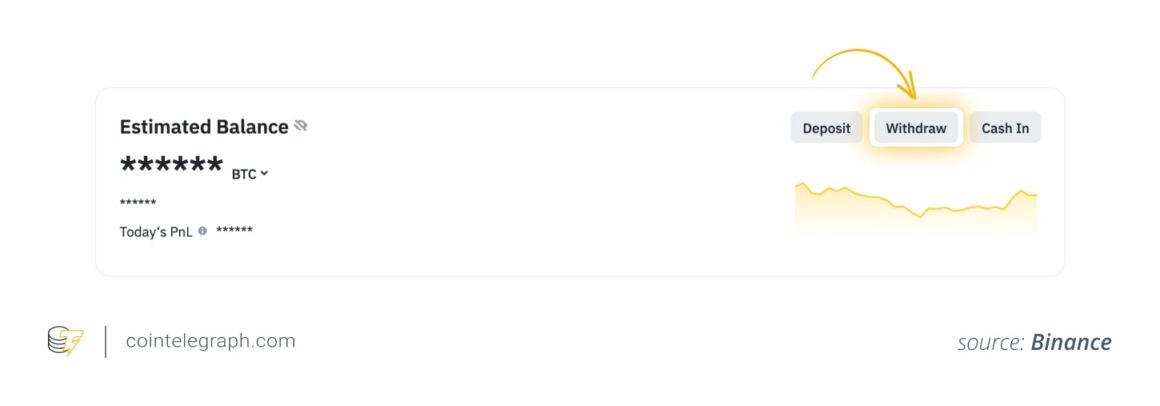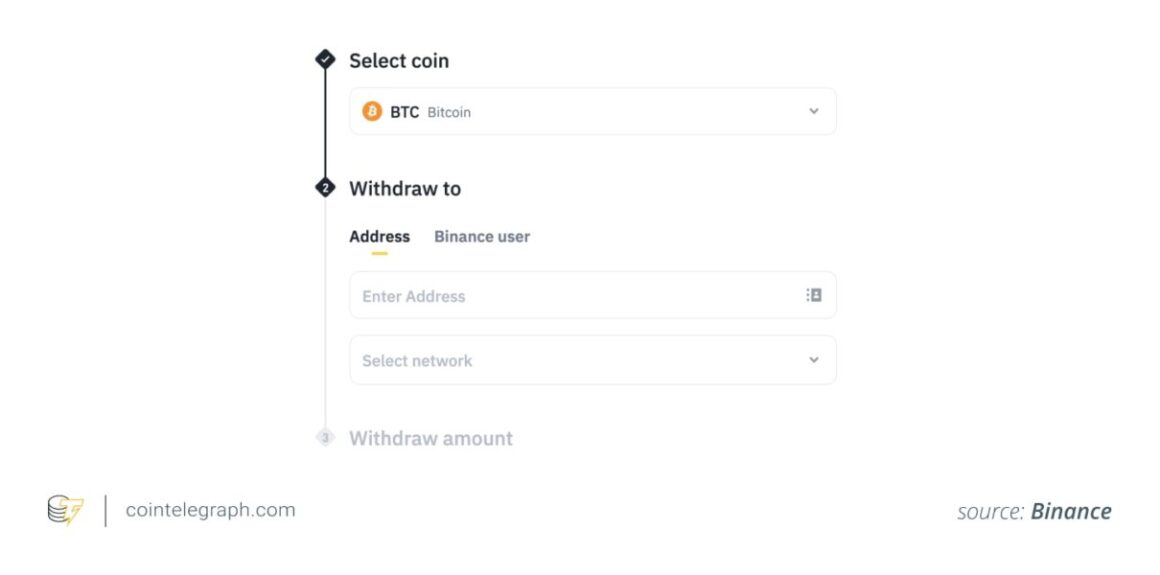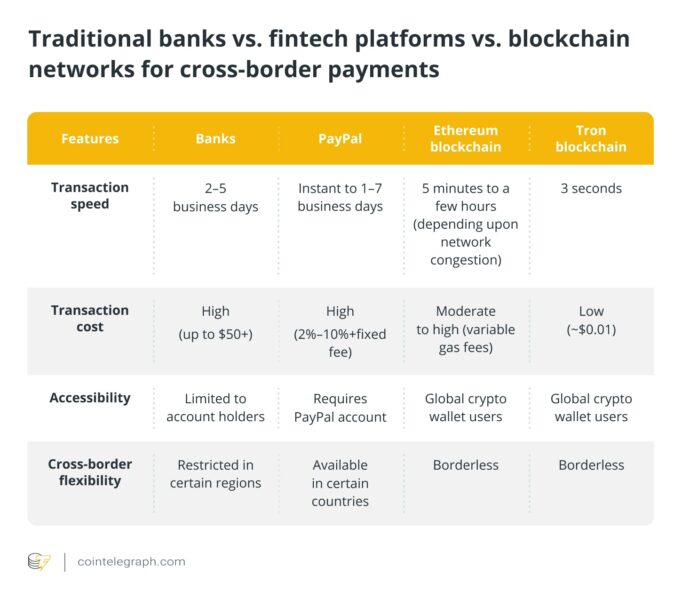Key takeaways
- Cryptocurrencies significantly reduce the high fees and lengthy processing times associated with traditional remittance methods, offering near-instant transfers with minimal costs.
- Crypto enables seamless international money transfers, especially in regions with limited banking infrastructure or during crises like conflicts or economic instability.
- Using blockchain technology, crypto eliminates intermediaries, ensuring faster, securer transfers without delays due to banks or holidays.
- To ensure smooth transactions, double-check wallet addresses, use secure platforms, understand blockchain fees, and adhere to local regulations to avoid complications.
On May 22, 2010, Laszlo Hanyecz made history by using Bitcoin to buy two Papa John’s pizzas, trading 10,000 Bitcoin — then worth just $25 — for the delivery. At the time, little did anyone know that cryptocurrency would emerge as a viable solution for international money transfers.
But why is crypto considered for cross-border transactions?
Traditional remittance methods carry high fees and take up considerable processing time. For example, if you’re in the United Kingdom, sending 1,000 British pounds to Los Angeles through a bank could cost you between 10 and 15 pounds in fees (depending upon the chosen banks), and the processing time can be a real hassle — often taking many business days.
While fintech solutions like Wise and Revolut have lowered transaction costs (between 1.50 and 4.66 pounds) and processing times (often instant), many people still face challenges accessing these services.
This article explores using cryptocurrencies to send money to family and friends abroad, highlighting the advantages of using crypto for making cross-border payments.
Why is transferring money abroad expensive?
Sending money in fiat currencies worldwide is expensive because of multiple layers of fees, including transfer fees, intermediary bank fees, recipient bank fees and exchange rate margins. On average, your bank charges 2%–4% of the total transfer amount just for the transfer fees alone.
In addition, international bank transfers usually pass through networks such as SWIFT (Society for Worldwide Interbank Financial Telecommunication), which connects banks globally for communication and transactions. As funds move through multiple banks — often for currency conversions or to streamline the transfer — intermediary banks charge additional fees to process these transactions.
Prerequisites for sending cryptocurrency
To make a crypto payment, here are the prerequisites you must know:
- Understanding cryptocurrency basics: Before sending money, familiarize yourself with the basic terms and processes in crypto, such as major cryptocurrencies like BTC and Ether, stablecoins such as Tether’s USDt, wallets, crypto exchanges, transaction fees, block confirmations, etc. Stay informed about the volatility and risks associated with cryptocurrencies.
- Setting up a secure crypto wallet: When choosing a cryptocurrency wallet, consider your needs and select a custodial or non-custodial wallet. Managed by third parties, custodial wallets hold your private keys, simplifying use but compromising control. Non-custodial wallets, such as hardware or software wallets, provide complete control over your private keys, prioritizing security while demanding responsible key management.
- Choosing the right platform for fiat-to-crypto conversion: Find a platform with a strong reputation, low fees and robust security measures. Verify if it supports your local fiat currency. Complete Know Your Customer (KYC) requirements and any other processes required for completing the registration process.
Did you know? Fiat-backed stablecoins reached a $161.2-billion market capitalization on Sept. 10, 2024, yet this was lower than the 2021 peak of $181.7 billion.
How to send money abroad using cryptocurrency
To send money globally using crypto, follow the steps below. This example uses the Binance app for illustration.
Step 1: Set up a crypto wallet
Choose an exchange or wallet compatible with the cryptocurrency you intend to send. Secure the wallet by setting up the recovery phrase and enabling security features such as two-factor authentication (2FA).

Step 2: Buy cryptocurrency
Transfer the required amount of fiat currency to the platform to buy the crypto you intend to send. Some wallets allow you to buy crypto just by linking your fiat currency account. You will need to pay exchange fees for the conversion, so make sure the cryptocurrency you buy includes this.
Step 3: Obtain the recipient’s wallet address
Confirm the recipient’s wallet address. It is important for the transaction to be error-free, as transactions are irreversible.
Step 4: Initiate and complete the transaction
- Tap the “Withdraw” button.

- Copy the recipient’s wallet address, paste it into the address field, and enter the amount you wish to transfer. Review all the transaction details, including the network fee. Opt for higher fees if a faster transaction is required.

- Tap “Send.” The platform will ask for a confirmation before sending the amount to the recipient’s address. Funds should arrive in a few minutes.
Step 5: Notify the recipient
Inform the recipient of the completed transaction and share the transaction ID for tracking if necessary.
Platforms for crypto transfer
There are various ways or platforms to make a crypto transfer, including:
- Crypto exchanges: They allow users to buy, sell and trade cryptocurrencies. They act as intermediaries, providing a secure environment for these transactions. Binance and Coinbase are examples of crypto exchanges.
- Peer-to-peer (P2P) platforms: They facilitate direct crypto transactions between individuals. This decentralized approach eliminates the need for intermediaries, offering more control and potential cost savings. Binance P2P is an example of a P2P crypto exchange.
- Mobile apps: Mobile apps for crypto remittances leverage blockchain technology to enable fast and affordable international money transfers. These apps streamline the process, making it convenient for users to send and receive funds across borders. Strike and Cash App are examples of mobile apps you can use to remit crypto.
Did you know? Satoshi Nakamoto sent the first-ever Bitcoin transaction to Hal Finney on Jan. 12, 2009. This pioneering transaction, comprising 10 BTC, would have been worth over half a million dollars 15 years later.
Are crypto cross-border payments really an efficient alternative to traditional transfer methods?
The best way to understand if crypto cross-border payments are more efficient than traditional methods is from a user’s perspective, as they are the final consumers of both services.
So, let’s look at a few examples to assess the advantages of using crypto over traditional payment methods.
Example 1: How crypto payments outperform Western Union and traditional transfer methods
A Reddit post highlighted how crypto cross-border payments are often underrated. A user shared their experience giving feedback to an overseas platform, where they used their ETH address to both prove their identity and receive a USD Coin payment.
The transaction fee was a mere $0.008869, and the settlement time was just two seconds. This stands in stark contrast to traditional services like Western Union or wire transfers, which involve complex processes, banks across countries, payment networks and extensive paperwork, making crypto payments a much more efficient alternative.

Example 2: Stellar (XLM) became the go-to option for cost-effective remittances
There is yet another example of remittances on Reddit when a user needed to send some money back home for renovation. They were annoyed that nearly every option using the fiat payment networks guzzled a lot of money before delivering money to the recipient. Western Union, for instance, required the user to pay $10–$12 for every $200 sent. The Redditor also found the platform taking advantage of exchange rate fluctuations during the money transfer to charge an additional 1%–2%.
When using money transfer organizations (MTOs) and online banking, the transaction was supposed to take two to three days, and they were charging between 3% and 5% of the transaction charges. On PayPal, the charges were somewhere around 10%.
In this scenario, the user found crypto the best available option. Using a cryptocurrency such as Stellar for transactions, they had to pay negligible charges, and it was faster than any of the above methods. Even after considering on- and off-ramp charges, the total cost was still lower than other options.

Benefits of sending money with crypto
As seen above, using cryptocurrency for money transfers offers many advantages:
- Lower fees and faster transfers: Unlike traditional banking systems, which may charge high fees and take days to process, cryptocurrency transactions are completed in minutes for a fraction of the cost.
- Avoiding currency exchange hassles: With cryptocurrencies, you can avoid the issues associated with currency exchange. Sending money in crypto eliminates the need to convert between fiat currencies, saving you time and any losses due to unfavorable exchange rates.
- No intermediaries or bank delays: Transactions are executed directly between the sender and the recipient via blockchain technology, with no role for banks. This helps you avoid delays due to bank holidays or system downtimes.
How can the recipient cash out the cryptocurrency?
Crypto users can cash out using a crypto exchange or crypto ATM or spend funds directly if merchants accept crypto.
If you have received crypto on an exchange, you could sell it on the same platform for fiat currency. However, be prepared to incur crypto exchanges’ fees. You also need to consider the spread, which represents the difference between the buying price (ask) and selling price (bid) of a cryptocurrency.
This spread is dynamic and influenced by several factors, including the specific cryptocurrency, the trading platform used, the trading agreement between brokers, market volatility, liquidity levels, transaction fees and trading volume.
In contrast, if you’ve received crypto via an exchange, you can easily sell it for fiat currency on the same platform.
Crypto ATMs can be quite convenient for cashing out your cryptocurrencies. If there is a crypto ATM in the locality that supports the cryptocurrency you have received, you can cash out your crypto there.
But, if you’re lucky enough to find a merchant who accepts crypto payments, you could simply spend your crypto there without the need for conversion.
How do cryptocurrencies solve key challenges in international money transfers?
Cryptocurrencies offer a robust solution to the challenges of traditional international money transfers:
Overcoming financial exclusion
Using crypto also lets you send payments to family and friends staying in regions with limited banking infrastructure and overcome the hurdle of financial exclusion. Many regions, especially in Africa and South America, have limited banking infrastructure or face restrictions due to sanctions or unstable economies.
In Venezuela, people bypass hyperinflation and sanctions by receiving remittances in BTC or USDt, ensuring value preservation and quick access to funds. In September 2021, El Salvador officially adopted Bitcoin as a legal tender to improve the population’s access to financial services.
Removing hurdles for the unbanked
Lack of documents is a major reason for many people remaining unbanked. Without identity and address verification documents, accessing fiat currency platforms such as Wise or Revolut becomes impossible, as these platforms must adhere to strict regulatory requirements.
Nonetheless, they can send and receive money using crypto platforms, particularly decentralized exchanges (DEXs).
Bringing down delays and costs
Migrant workers in countries such as the United Arab Emirates or Singapore regularly send money home to their families in countries such as India, the Philippines or Nigeria. Sending through fiat channels results in delayed transfers (two to five business days) and up to 10% transaction fees.
On the other hand, the average transaction cost on the Solana blockchain is around $0.00025. The time taken for confirmation of a transaction is around five seconds.
Sending emergency funds to conflict zones
In the event of a conflict, like in Ukraine or Afghanistan, bank systems often shut down, or international remittance services halt operations. Refugees and families use cryptocurrency to receive emergency funds instantly when local banking systems collapse.
Providing quick relief during calamities
Ethereum co-founder Vitalik Buterin made significant contributions to the India COVID-19 Relief Fund, initiated by Polygon founder Sandeep Nailwal.
In May 2021, he donated 50 trillion Shiba In tokens valued at $1.2 billion at that time. Earlier, Buterin had donated approximately $600,000 in ETH and Maker tokens in April.
Setting aside strict capital controls
Countries often impose strict capital controls or freeze accounts during financial instability. For instance, in the aftermath of the economic crisis in Greece and Lebanon in 2009 and 2019, respectively, the governments undertook stringent financial measures. Receiving and sending money using fiat often becomes troublesome in such a scenario, but crypto provides a way around it.
Did you know? By November 2024, Bitcoin’s market cap had reached nearly $2 trillion, overtaking silver’s $1.7-trillion market cap and establishing itself as a major global asset.
Comparing cross-border payment systems: Traditional banks vs. fintech platforms vs. blockchain networks
Traditional banks, fintech platforms like PayPal and blockchain networks like Ethereum and Tron each offer unique features and limitations.
Banks offer a regulated medium but are costly and slow, whereas PayPal is speedier but charges significant fees. On the other hand, blockchain networks offer borderless, cost-effective alternatives with diverse transaction speeds and scalability.
Here is a comparative table of cross-border payment systems:

Tips for secure and efficient crypto transfers
Ensuring the security of your crypto transfer is important. Here are some tips to keep your crypto transfer secure and efficient:
- Double-check the wallet addresses: Before sending funds, make sure the recipient’s address is correct. Transactions are irreversible, so a single error might result in the loss of your funds.
- Use a reputable platform: To transfer crypto, use an established platform such as Binance or Coinbase. These platforms provide safe infrastructure while reducing the risk of fraud or technical concerns.
- Enable 2FA: Enabling 2FA on your wallet and exchange adds extra security and lowers the possibility of illegal access to your account.
- Consider network fees and speed: Understand various blockchains’ costs and transfer speeds. For example, Bitcoin will take longer to execute transactions and charge higher costs than a later-generation blockchain such as Solana or Polygon.
- Secure your wallet: Whether you are using hot wallets or cold wallets, ensure that your wallet software is updated on a regular basis to avoid vulnerabilities.
Common challenges in crypto transfer and how to overcome them
If you are new to crypto payments, you could face issues, including:
- Network congestion and delays: Issues such as network congestion and delays occur during peak transaction demand, resulting in delayed processing times. To mitigate this, you could prioritize transactions with greater gas prices, resulting in faster confirmations during peak periods.
- Volatility: Cryptocurrency volatility diminishes the value of payments in transit. To steer clear of volatility and ensure consistency of value, you can use stablecoins such as USDt or USDC.
- Wallet address errors: If you mistakenly put in the wrong address, it might result in permanent losses. Always double-check the recipient’s address or use QR codes to ensure accuracy.
- Regulatory hurdles: If you are unaware of the regulatory environment in your jurisdiction, you may face unexpected hurdles when sending. To avoid problems, keep informed about local regulations and adhere to them.
When sending money to family and friends with cryptocurrency, being proactive helps make transactions smoother, safer and more trustworthy. Small details such as adjusting gas fees, using stablecoins and double-checking can keep trouble at bay and ensure money reaches the recipient.
Are there tax implications for sending cryptocurrency abroad?
Sending cryptocurrency abroad will result in tax consequences depending on the country. In the United States, the Internal Revenue Service (IRS) recognizes cryptocurrency as property; therefore, transferring funds may result in capital gains tax if its value has increased since acquisition.
In the United Kingdom, His Majesty’s Revenue and Customs (HMRC) regards such transactions as taxable if the gains exceed the yearly exemption.
Japan taxes cryptocurrency gains at a progressive rate, classifying them as miscellaneous income. In contrast, Singapore does not levy capital gains tax, but it may tax enterprises that interact with cryptocurrencies, while the United Arab Emirates has no personal income tax, making it a cryptocurrency-friendly nation.
Regardless of your location, keeping detailed records of transactions is critical for compliance. Consult local tax standards or specialists to ensure accurate reporting and avoid penalties.
Source: https://cointelegraph.com/news/how-to-send-money-to-family-and-friends-abroad-with-cryptocurrency



